Nothing Salt Can Stay
Is East Village roastbeefaria This Little Piggy Had Roast Beef closed for good? That would be a shame, there are so many memories from our early days as a food vertical.
Peter Matthew Bauer, "Latin American Ficciones"
New ground is not broken, new pathways are not forged, nothing about this song or its video will particularly strike you as stunningly original or unique and yet there is something about it that kept me watching and listening all the way through, which will just have to be enough. Sometimes things just need to be okay. It doesn’t all need to change your life. [Via]
Matrix Matrixy
“And the damn thing still holds up…. It’s a mystery in which the object of pursuit is not a priceless antique or the solution to a murder but the human condition. It skips genres with the kind of ease with which its characters leap across buildings. Its heroes turn the hard noir angles of this world into liquid ripples of possibility. Chiaroscuro lighting gives way to blank white fields, cold green clutter and chaos to warm, clear-eyed symmetry. The movie hacks itself.”
If We All Pretend Hard Enough We Can Create More Jobs
“You know what’s been the biggest job creator over the last few decades? Financial bubbles. The labor demand created by the dot-com bubble in the 1990s and the housing bubble of the 2000s created millions of jobs and sent the unemployment rate below 5 percent in both cases.”
"Illmatic" At 20, Nas At 40
by Adam Plunkett
Like this is Nas, who became famous with his second album, in 1996, but who made his name with his first album, “Illmatic,” twenty years ago, and likes to rap about how he still looks like the twenty-year-old who made it. He does, even though he’s twenty years removed from the life he made his masterpiece out of, his portrait of the artist as a young man in the Queensbridge housing projects in Long Island City that he loved and feared and resented. He rapped his way out of them as he enshrined them; he got what he wished for. But despite a beautiful song here and there, and no matter how well his albums have sold, he hasn’t made any remotely as good as “Illmatic.” His art made him the person he wanted to be, which made him unable to make that kind of art anymore.
Nas calls the album a novel. I’d say epic poem. Anyone can see the incredible density and precision of the language, but you probably have to listen to it to feel its range and depth of emotion. When he says, on the second verse of “Life’s a Bitch,” “I woke up early on my born day; I’m twenty, it’s a blessing/The essence of adolescence leaves my body, now I’m fresh and/My physical frame is celebrated cause I made it/One quarter through life some Godly-like thing created,” it’s so powerful because of all he leaves out. He’s assured where AZ was anxious on the first verse, awed where AZ was dejected, but he evokes the feelings of promise and power so well because he never loses hold of their opposites. His birthday would’ve felt like less of a blessing if it hadn’t been for the curses of all his friends’ deaths (“I’m destined to live the dream for all my peeps who never made it,” says AZ). He’d have felt less like “some Godly-like thing created” if he didn’t also feel, as AZ says, “that something must have got in us cause all of us turned to sinners.” “Life’s a bitch and then you die,” as the chorus goes, and Nas wouldn’t have had to celebrate his “physical frame” if he’d been sure he had a soul. When Nas says the last chorus, “Life’s a bitch and then you die/That’s why we get high/Cause you never know when you’re gonna go,” it isn’t shallow nihilism but hope that can’t sustain itself, as well as Nas acting hard while his dad plays a melancholy riff on the cornet.
Nas has written about the pressure he felt to hide his intelligence. What “Illmatic” hides is his vulnerability, the soft emotions beneath the hard surface. You feel his emotions even though he hardly emotes, and this tension made his reputation. But fame cost him the pressure to hide himself as it afforded him a life he was much less conflicted about. This is as good for his life as it’s bad for his art: it takes away his act with his material. The title of his latest album says it all with its simple, simply put happiness. “Life Is Good,” but the music is not.
There are plenty of rappers who get better with fame. Nas just isn’t one of them. I’m sure he had plenty of fun with wealth and fame, but his music never lets you have fun with them. He hasn’t made a single good party song. (I’m not sure he tried, unless you count “Oochie Wally.”) He doesn’t make you want to be him, even if you want to listen to him or even talk like him. You want to be someone if they’re cool, and his best later music is too angry or sad or ostentatiously impressive to be cool. Some rappers get around this with aliases and personae, who have more fun with blunts and broads than the rappers actually do in their spare time. Nas has a genius for personae only when they’re angry or sad — his girl equivalent Scarlett, a gun — but tends to embarrass himself when they try to be cool, like Escobar the gangster. He’s infinitely less convincing as Tony Montana than as the guy who wants to be Tony Montana. Just listen to “The Firm,” a group album from 1997 about a mob family that no one seems to have believed in besides its members and Dr. Dre, its producer. To laugh at Nas trying both to flash wealth and to inhabit a persona, watch the video for “Hate Me Now,” in which he alternately raps as “God’s Son” from the cross at Golgotha (while the heathens stone him) and looks like a rather effeminate fluffy snowman in the club with Puff Daddy.
No matter how popular Nas got, he was never a good pop musician. He’s too real. He has to draw on his own inner conflicts. He has shockingly little instinct for branding himself, and in this way is a perfect study in contrasts with that other living legend from early ’90s hip-hop in New York: Jay-Z, that walking advertisement for himself.
Hova not only made a wildly successful career as a businessman but made it out of the fact of his being a businessman. (“I’m a business, man.”) When he hustles, he’s a hustler, baby. It isn’t crass capitalism but the American dream. With Obama on speed dial, a perfect wife who sings about how perfect they are, and a book that, as predicted in “Money, Cash, Hoes,” was a bestseller, Jay-Z has to be more ensconced in the power structure than any other entertainer in America. He personifies success to more or less everyone. It’s hard not to want to be him.
Nas agitates where Hova ingratiates. Where Jay saw himself as a business when he was still just an artist, Nas never fully shed the anti-authoritarianism that goes back to his verse on Main Source’s “Live at the Barbeque” from 1991: “Nasty Nas is a rebel to America.” (In 2004, he named a whole album, “Street’s Disciple,” after the start of that verse.) While Jay was making hip-hop into even bigger business, Nas was telling everyone why “Hip Hop Is Dead” (on a label Jay signed him to). While Jay was pushing hip-hop further into the power structure, stripping away whatever shred of embarrassment white and powerful people might have had about identifying with hip-hop, Nas made a brutal album about structural racism and tried to call it “Nigger.” He’s turbulent to Jay’s cavalier, flawed to Jay’s flawless. His wife left him. He’s been bad — possibly real bad — with his money. His latest venture into mogulhood is a sneaker store… in Las Vegas. (The latest news on that was a month ago, when it apparently began hiring.) His albums still have shoutouts to everyone “trapped in the nineties.”
Is it any wonder that they feuded so bitterly at the turn of the century, even after Jay’s mom made him stop? The self-promotional genius and the man whose genius seems to extend to everything besides self-promotion, both of them in New York, the one a force of commerce and the other, in his words, a representative of “the art side of hip-hop” — of course they’d clash. That’s why it was hard not to see some mixed motives when Jay invited Nas to perform with him at Carnegie Hall. It was 2012, years after they’d publicly reconciled. But it was Jay’s coronation, Jay’s sold-out show with an orchestra and seats running at least $5000 a head. He was the king of New York. After his mega-hit “Empire State of Mind,” he brought on Nas for “Illmatic”’s “New York State of Mind,” as well as “If I Ruled the World” from two years later. Yet it was clear which of the two men in bowties and evening clothes with sunglasses ruled the world, which of them thought like an emperor rather than just a New Yorker. Nas could have hardly looked happier. But is it any wonder that he wanted to follow Jay’s orchestral concert with a rather different one of his own?

The show was a setting of “Illmatic” for the National Symphony Orchestra at the Kennedy Center this past Friday and Saturday. It was the album’s anniversary — almost twenty years to the day — and tickets sold out quickly, though not for $5000. The concert hall was nearly full when I walked in fifteen minutes before the show on Friday evening. At just after eight, the conductor strode onstage and faced the orchestra, flanked by a drum set and a DJ and an acoustic bass. The overture was short, with long strings, light drums, and dark blue lights that went red when Nas entered stage right.
“D.C. So good to be here tonight with you. This feels good right here. You look good out there. Twenty years in the making.” The overture stopped. “What was I thinking. 1992. I was just trying to get in the rap game. The incredible rap game. It was all a dream.” And there he was onstage at the Kennedy Center in bowtied evening wear with sunglasses, telling us how he waited for his time to come. “And when that time came, I took it.” He clenched his fist at his side as the strings took up “New York State of Mind.”
They played the bass line faithfully. It wasn’t ostentatious or weird. Even if the NSO and “Illmatic” are worlds apart culturally, the album’s production is so spare that it’s easy to emulate musically, and the orchestra delivered the plodding, restless line that Nas flows over like a torrent even if it’s more menacing on the album. Nas skipped the introduction, but I doubt anyone in the crowd couldn’t yell it by heart. “You’re sitting at home doing this shit? … Stop fuckin’ around and be a man.” The music got louder as he got to the chorus, and the DJ started scratching at the end. He held his right fist across his chest and bowed his head as the music went silent again.
He told us about the small room in a small apartment on the fifth floor where he spent his time writing the album. “Teenage minds is wild…. That was life.” It was at this point that I realized the absolute difference between the kid who wrote the album and the man performing a version of it here. His mind wasn’t there anymore. And the narration, the formalwear, the whole ceremony of making something classical out of a classic — it honored the album as it made it clear for everyone to see that past was past.
We all sang the chorus to “Life’s a Bitch.” He said it by himself at the end and said, “That’s some real shit, right?” (Right.) “Shoutout to my father, Olu Dara. This is that horn part he wrote.”
The concert went off-script. He rapped parts of a few songs off his second album, and the crowd, most of whose members had been seated in observance of orchestral pieties, got up and got down to the recording of Lauryn Hill’s chorus in “If I Ruled the World.” Most of the show was a compromise: we danced in our respective seats.
He changed a few words here and there — most, I thought, from conscientiousness. “I miss Mr. Magic,/Versatile, my style switches like a faggot,” from “Halftime,” became “I miss Mr. Magic,/Rest in peace, Mr. Magic.” He cut a few uses of “nigger.” “He got a big cheer when he switched out “I’m out for dead presidents to represent me” in “The World Is Yours” for “I’m out for President Barack Obama to represent me.”
He said a few words during halftime. “That was a time” — the early nineties — “when the climate of the world was real harsh…. The music represented that harshness. But today I’ve grown. I’m a little bit more refined. I’m still hood, though.” That got a small cheer. “I listen to Miles, Coltrane….. And I’m intrigued by Bach and Beethoven and all that.” That got a big cheer, and he rapped “I Can” (from 2002), with its sample of Beethoven.
The mood shifted with “Memory Lane,” as it does on the album. He sat on a stool and rapped softly, at almost a whisper, at which point I was grateful beyond belief that the acoustics were good enough and the instruments were soft enough that you could hear every syllable. Rap shows are usually parties, and this was closer to poetry.
Things got a bit out of order. (After all, it had been twenty years.) He rapped “One Time 4 Your Mind” before “One Love” and said, “They call me Nas, I’m not your legal type of fella” two songs early. He laughed and came in on the verse again. He rapped “Hate Me Now,” an interpolation, and ended by saying, “You can love me now, baby,” with a smile.
“Thank you for giving me twenty years in your ears,” he said. “We now conclude with the final song of ‘Illmatic.’ That was the end of the cassette…. This is my track because I was a big Michael Jackson fan.” We learned that the iconic picture on the front of “Illmatic” of vaguely toddler-age Nas with a mean mug and an afro was inspired by Michael Jackson. “I’ve never told anyone that before,” he said. “If you were there with me in ’94, make some noise,” and everyone did. “I love you for that.”
He played the last song. He bowed deeply. He thanked us “for keeping ‘Illmatic’ alive through the years. I’ll love you forever.” He walked out to “Could This Be Love?”
The lights went on, but most of us were dancing. A number of people walked out in the aisle toward the exit until the DJ told us to stay, and Nas came back a few minutes later with his bowtie untied. Everyone walked down to the stage: there was no more orchestra to respect, and we were up anyway. It felt like a normal hip-hop concert, with no one worried about keeping their hands down. The ushers, in their red blazers, were anxious to keep everyone from getting too close to the stage, but I couldn’t see why. No one was disorderly or even especially young. I looked back at the rest of the crowd and wondered whether I could take a good picture of the breathless glow on everyone’s faces as they watched Nas sit on a stool and tell us that he only needs one mic and one pen and that the time is now.
Adam Plunkett is the assistant literary editor of The New Republic.
Digital Artists Document Life 'On the Go'
by Awl Sponsors
This post is brought to you by the Samsung Galaxy Note®Pro.
Life has never been better for artists, designers and creative professionals on the go. An expansive array of new technologies and apps now allow artists an unprecedented level of control and precision over their work. Tablets, specifically, offer artists an ease of mobility that allows them to capture inspiring scenes wherever they appear.
In celebration of the digital artist on the go, The Awl equipped two working artists with a Samsung Galaxy Note®Pro and asked them to document a passing scene from their everyday life. Check out their amazing submissions below.
Valeriya Volkova
Last January Valeriya Volkova’s art found its way on to reddit and proceeded to explode onto the much coveted front page. Hundreds of thousands of views and comments later, HuffPost named Valeriya as one of the artists who is on their radar. Valeriya’s work covers everything from city life to offbeat portraits to anthropomorphized pizzas — all exhibiting her trademark surrealist, psychedelic style. Check out Val’s original submission.
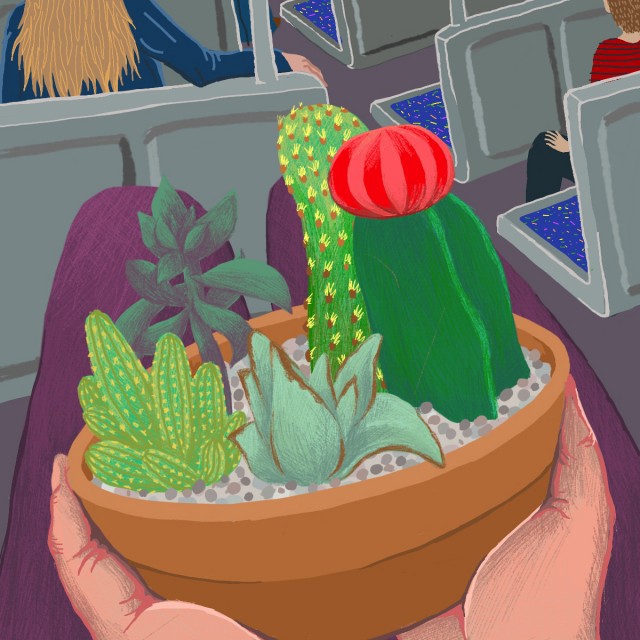
What was your inspiration for the image/scene you chose?
A couple weeks ago, I bought a little pot of cactuses at the big flower show here in Philadelphia, and took the subway home with it. I thought the alien-looking succulents and cactuses made for a great image in juxtaposition with the dark steel train interior, like little train riders of their own.
How is working on the tablet different than other mediums you’ve worked with?
I’ll always have a special spot in my heart for paint and paper, but the tablet offers so many benefits, especially for drawing on the move! My favorite thing has been the ability to sketch in color, without carrying a million pens or having to mix paint outdoors. I often have an issue when I see a fleeting scene or landscape I like while traveling — I’m inspired by a particular shade or combination of colors, but can’t get those colors right when I later get to my art supplies. For example, I was on a train going by the Hudson river a few weeks ago, and the sky, cliffs, and icy water made such amazing strips of color — and I had no way to capture those exact subtle shades and the combination they made! I have to rely on my memory for stuff like that, which is sometimes fun and sometimes frustrating. Sometimes I’ll try to take notes that are like “lightish grayish blue next to dark brownish pinkish color” and am later clueless as to why I wrote it down and what those colors are supposed to do next to each other. With the tablet, I can pull it out and have the right shades down in seconds! I did a practice landscape on the tablet with a photo I had from that train ride, but I think it would have been amazing to have had the tablet there in person. I was also surprised by how organic drawing on a tablet feels — in particular, I was using Sketchbook Pro, and some of the brushes that come with it feel like you’re really sketching with colored pencils or markers. I had been doing a lot of actual painting before this project, and I found myself enjoying the tablet more in contrast — it’s so much less tedious to put down a big area of flat color, or to change things around. I feel like my drawings are almost an interactive game on it — for example, I love being able to move or rotate elements around with my fingers!
What artists have had the biggest influence on your style?
I’m always absorbing new inspirations and influences, but I would say my earliest artistic inspirations came from animation — I spent my childhood in Russia, and watched a lot of amazing cartoons from the 70s and 80s, which were all done in such distinct styles, from watercolor to claymation. It really inspired my love of crafts and wacky characters. When I moved here in the 90s, Nickelodeon cartoons of the time were really amazing, and shows like Hey Arnold probably still inspire my love of drawing towns and goofy urban scenes. Aside from that, my earliest “real” artistic influence was probably Salvador Dali — he’s probably cliche to cite as an influence, but as a kid I was always attracted to the spontaneity, weirdness, and small details of his work. I’m always in awe of detail-oriented artists — my favorite painting for as long as I can remember has been Bosch’s “Garden of Earthly Delights”, and I still look at it from time to time to remind myself just how interesting and involved a world contained in a rectangle can be.
Val also submitted some additional drawings she made while experimenting with the Samsung Galaxy Note®Pro. Check them out below, along with the real scenes that inspired them.
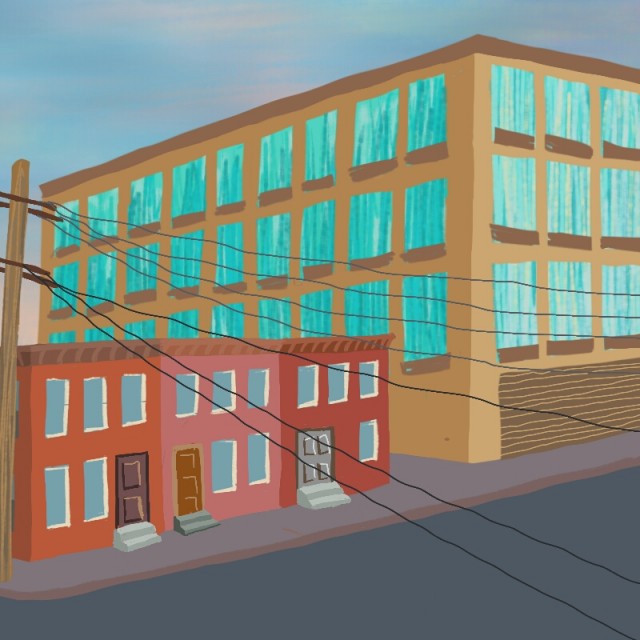
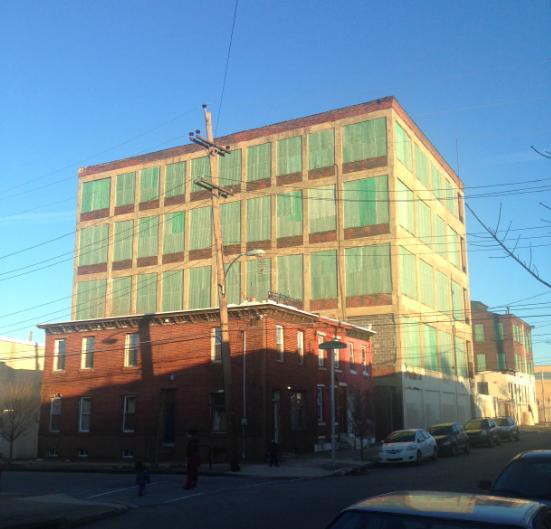


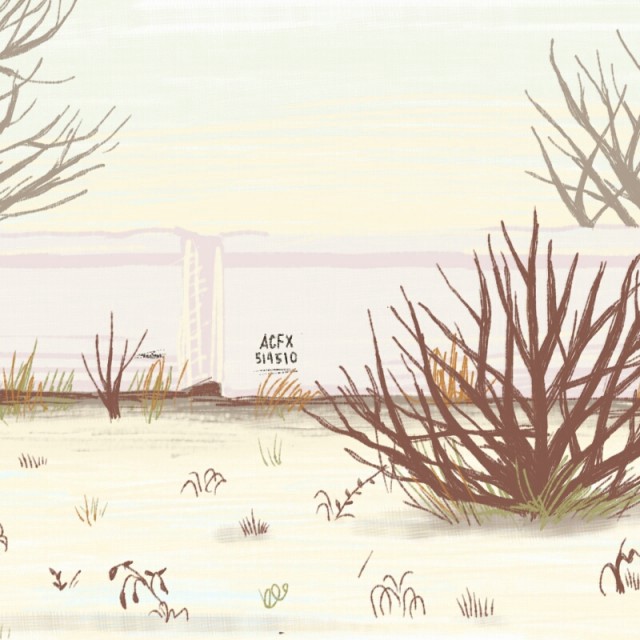

Miryam Prodonavic
Our second artist, Miryam Prodanovic, is a Texas native. She was raised in Dallas by parents of Czech and Colombian origin and attended the University of North Texas, where she received a BFA Drawing & Painting, Minor in Anthropology. Miryam’s work is “informed by spectrum of terrain and climate seen in North and South America, Europe, Russia and the backyard.”
Miryam claims a wide range of creative influences. In addition to finding inspiration in her training in dance and music, she is also particularly fond of the computer art of Ringo Starr. Here’s Miryam’s submission.
What was your inspiration for the image/scene you chose? When/where does it take place?
The scene I chose to depict is of the stage in my favorite music house in Red Hook Brooklyn. It is a tiny place, tucked away from usual NY where characters of all kinds come out from under rafters to perform their songs. I enjoy going here to step away from crowds and see individual humanity displayed clear as a bell. I wanted to show in the picture the comfort of the velvet curtain wrapping the stage area, and a performer expressing something from the heart.
How is working on the tablet different than other mediums you’ve worked with?
Differences between the tablet and other mediums begin with the physicality of a digital interface versus a tactile one. At first I was confused by this, thinking that drawing had to be completely different from anything I would do in another format. But as I explored the options in the app for how to change the mark and realized that the tip of the stylus actually reacts to speed of contact with the screen, I became very excited about the device. The second difference that struck me is the portability of this tool. I cannot bring all my pencils with me everywhere I go, nor a canvas. It is a comfort to have the option to draw without the bulk of materials on my person when out and about. The third difference that impressed me while using the tablet is how quickly one can make changes to an image. Paper breaks under layers of marks, and erasers don’t always work. The tablet screen is so clean!
I used SketchbookPro to create my images. I liked it! It seems to me a perfect middle-ground between MSPaint and Photoshop! Much more than just the basics, but not overly complex. After working with this app for this time, I am now interested to see how one could transfer the files into a program that can animate a string of drawings together like a film. That would be very interesting to me.
What artists have had the biggest influence on your style?
This is always a difficult question to answer. I am influenced a lot by nature to be inspired to draw in the first place. But artists I respect a great deal include Kara Walker & William Kentridge for their success in tying multi-media to their interests in making imagery. I often work with Swoon & Nicola Lopez who are printmakers that create very intricate and ornate installations. Their practice reminds me that while simplicity may seem pure, to decorate a piece of work for longer periods can build something amazing over time. I cannot leave Egon Schiele out of this list, as his mark-making is truly the most beautiful I can recall. The raw and romantic immediacy of his lines will always be present to me.
Check out more of Miryam’s art below.
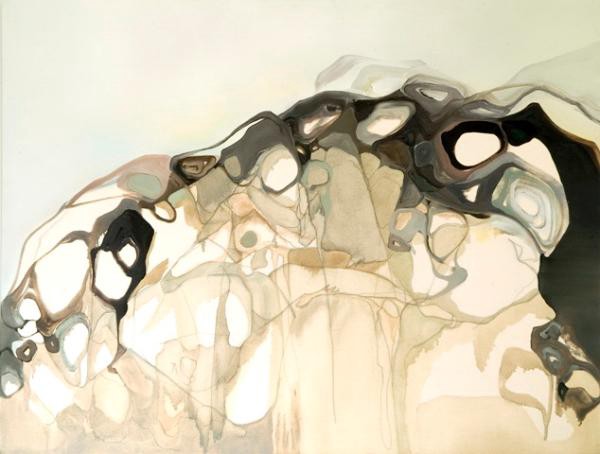
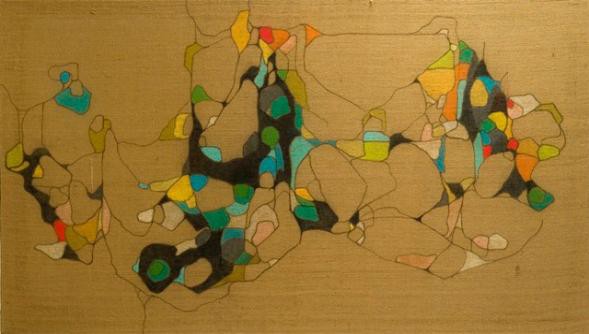
We Can't Spend Ourselves Rich Anymore
“Borrowing sustained the mass consumption model for a few decades. Non-rich households borrowed to buy cars, buy food, pay medical bills, buy ever-more-expensive houses, and so on. Conveniently, rich households had plenty of spare cash to lend them. That model broke apart in 2008 and has not — and cannot — be revived.”
Girl Scout Cookie Sales Is Really About Storytelling
“People want to buy from a top salesgirl, she says, because they assume a successful person knows what she’s doing: ‘And if you explain your goal, people want to help you reach your goal.’ She preempts objections from the dieting crowd by offering to donate their orders to troops overseas, and she ends with what her father taught her is a classic presumptive close: ‘This year, five boxes only cost $20. Can I help you pick out your five?’ ‘People smirk because it’s cute,’ she says.”
— One of New York City’s leading Girl Scout cookies salespersons reveals her secrets.
Shirley Jones Is 80
Happy birthday to Ms. Shirley Mae Jones. She was great in Grandma’s Boy, but she also did some other stuff of equal merit.
New Yorkers Maybe Aren't All Killing Themselves
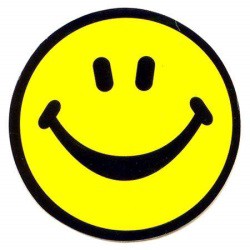
“Whatever it is, the truth remains: For every hanging or jumping, there’s someone out there in this city who didn’t kill himself — and likely would’ve given in to despair, if he’d been in Las Vegas, Houston or Atlanta.”
— Don’t believe what you read in the New York Post
; New Yorkers are less likely to kill themselves than people in other parts of the country, says the New York Post.
